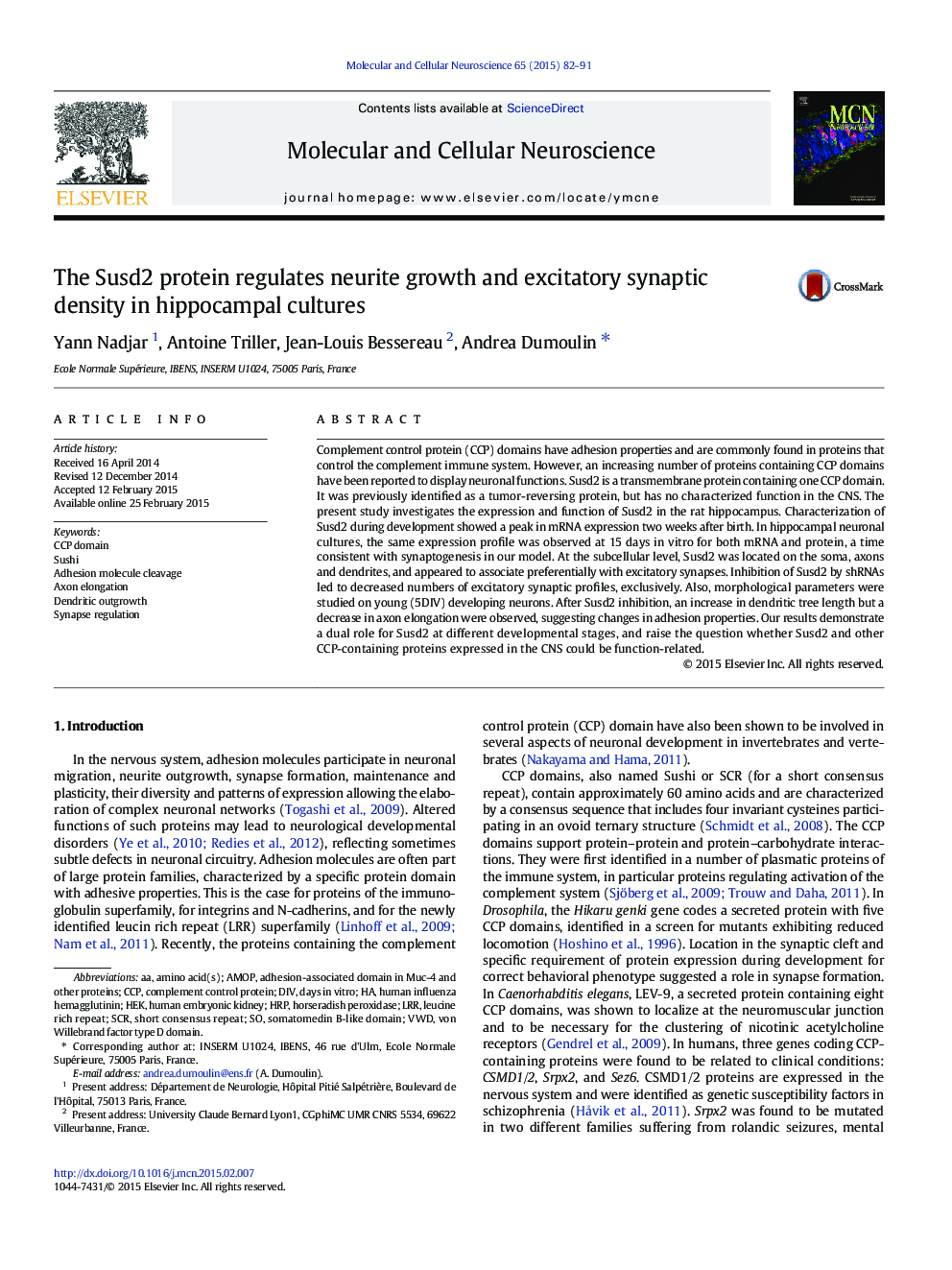| Article ID | Journal | Published Year | Pages | File Type |
|---|---|---|---|---|
| 8478576 | Molecular and Cellular Neuroscience | 2015 | 10 Pages |
Abstract
Complement control protein (CCP) domains have adhesion properties and are commonly found in proteins that control the complement immune system. However, an increasing number of proteins containing CCP domains have been reported to display neuronal functions. Susd2 is a transmembrane protein containing one CCP domain. It was previously identified as a tumor-reversing protein, but has no characterized function in the CNS. The present study investigates the expression and function of Susd2 in the rat hippocampus. Characterization of Susd2 during development showed a peak in mRNA expression two weeks after birth. In hippocampal neuronal cultures, the same expression profile was observed at 15Â days in vitro for both mRNA and protein, a time consistent with synaptogenesis in our model. At the subcellular level, Susd2 was located on the soma, axons and dendrites, and appeared to associate preferentially with excitatory synapses. Inhibition of Susd2 by shRNAs led to decreased numbers of excitatory synaptic profiles, exclusively. Also, morphological parameters were studied on young (5DIV) developing neurons. After Susd2 inhibition, an increase in dendritic tree length but a decrease in axon elongation were observed, suggesting changes in adhesion properties. Our results demonstrate a dual role for Susd2 at different developmental stages, and raise the question whether Susd2 and other CCP-containing proteins expressed in the CNS could be function-related.
Keywords
Related Topics
Life Sciences
Biochemistry, Genetics and Molecular Biology
Cell Biology
Authors
Yann Nadjar, Antoine Triller, Jean-Louis Bessereau, Andrea Dumoulin,
